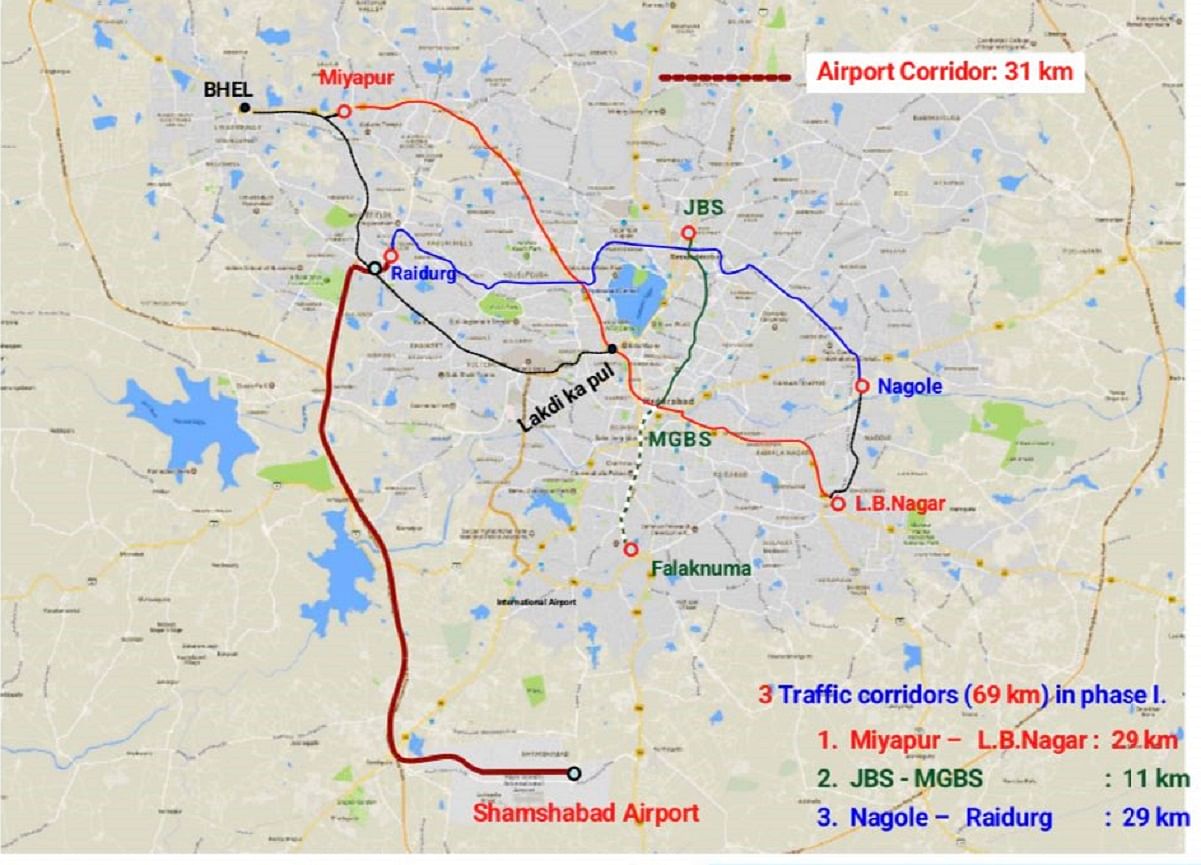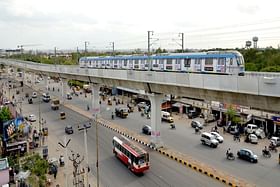The Airport Metro will reduce travel time from the city to the airport by up to 50 per cent. The metro is expected to take just 20 minutes to connect the airport to the main city.
Nearly six years after the Hyderabad Metro Rail (HMR) was launched, the twin cities of Hyderabad and Secunderabad will see the next phase of development when bids for the Airport Metro Express from Raidurg to Rajiv Gandhi International Airport at Shamshabad are finalised.
The Phase II of the project is the Airport Metro Express from Raidurg to Rajiv Gandhi International Airport which will be a 31-km elevated, on-ground and underground project, costing Rs 6,250 crore. It will be fully funded by the state government through the EPC (engineering, procurement, and construction) mode.
Hyderabad Airport Metro Ltd (HAML) issued a tender for the Design and Construction of the Hyderabad Airport Express Line last month.
This metro rail line would connect the IT hub in western Hyderabad and the airport located in southern Hyderabad.
The airport corridor will connect Mindspace junction near Raidurg Metro station and the city’s international airport located at Shamshabad after traversing along the Outer Ring Road (ORR) of the city.
The Airport Metro will reduce travel time from the city to the airport by up to 50 per cent. The metro is expected to take just 20 minutes to connect the airport to the main city.
Biodiversity junction, Nanakramguda, Narsingi, TS Police Academy, Rajendranagar, Shamshabad, Airport Cargo station and terminal are expected to be a few of the stations. The Airport Metro will connect the city to the airport and other major areas, such as the IT hub of Hitec City, Madhapur, Gachibowli, Nanakramguda, Narsingi, Kokapet etc.

Despite the proposal for phase II being cleared in early 2018 and budget allocations already announced, it took the Telangana government five years to begin the second phase.
The Delhi Metro Rail Corporation (DMRC) had completed a detailed project report, however, no progress was made until Chief Minister K Chandrasekhar Rao laid the foundation stone in December 2020, reports The Hindu.
In contrast to other metro rail initiatives across the country, the project failed to attract bidders from infrastructure firms, despite offering better terms than the first phase of the L&T Metro Rail Hyderabad project in 2010.
The Phase I metro project was built under the public-private partnership mode, and a consortium of public-sector banks led by the State Bank of India had loaned around Rs 11,000 crore. This project is the only one of its kind in the country.
At present, Hyderabad’s metro rail network spans over 69 km with three corridors criss-crossing the main city.


